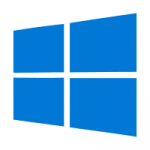 As you may be aware, there’s no longer any practical way to avoid installing Windows 10 updates. Once Microsoft pushes them out, they’re going to end up on your computer whether you want them or not. But maybe you trust Microsoft to make changes to your computer while you sleep (for the record, I’m definitely not). On the other hand, when an update ends up causing problems, it makes these forced updates look downright irresponsible.
As you may be aware, there’s no longer any practical way to avoid installing Windows 10 updates. Once Microsoft pushes them out, they’re going to end up on your computer whether you want them or not. But maybe you trust Microsoft to make changes to your computer while you sleep (for the record, I’m definitely not). On the other hand, when an update ends up causing problems, it makes these forced updates look downright irresponsible.
According to numerous reports, the recently-announced October Update for Windows 10 is causing user files to be silently deleted. Now, before you go into panic mode, keep in mind that the October Update is not yet being pushed out to all Windows 10 computers: the only way to install it is to manually check for available Windows Updates. For now, the only people affected are those eager types who like to install shiny new things before looking closely at them.
Microsoft is aware of the problem, and they are looking into it, although it’s not at all clear when it might be resolved. Hopefully Microsoft will either pull the update, or at least delay pushing it out to all Windows 10 computers.
If you’re worried about losing files, I strongly suggest backing up all your documents, images, music, video, and other data files. Which you really should be doing anyway. I back up all my data nightly to an external hard drive, using the freeware Cobian Backup.
Update 2018Oct07: Microsoft put a halt to the planned rollout of the October update. The update is still available via Windows Update, so don’t think seeing it listed there means the problem has been fixed. All it means is that the update won’t be pushed out until the issue has been resolved.
Update 2018Oct08: When you shift testing away from professionals and to your user base, quality will suffer. Things are going to slip through. That’s why formal software testing is so important, especially for operating systems and other critical software. Microsoft seems to have made an erroneous assumption: that if you have a (nearly) infinite number of monkeys people using your software, they will find (and reliably reproduce) every bug. In fact, the people doing this unpaid “testing” are mostly power users who are just hoping that their own specific needs will be better served by the latest version. They aren’t testing every scenario, just the same one they tested for the last version. Power users are also much less likely to make the kinds of obvious mistakes that regular folks make, which can lead to surprises even after an update is pushed out to the general public. This situation seems likely to get worse, sadly. The Verge weighs in.
Update 2018Oct16: On October 9, Microsoft made a new (fixed) version of the October update available to users subscribed to the Windows Insider program. Microsoft also seems to understand that the current user-focused testing process is less than ideal: the Windows Insider Feedback Hub now allows users to provide an indication of impact and severity when filing User Initiated Feedback.
 Earlier this week, Oracle released its quarterly Critical Patch Update Advisory for October 2018. As usual, there’s a new version of the Java runtime Engine (JRE): Version 8, Update 191 (Java 8u191).
Earlier this week, Oracle released its quarterly Critical Patch Update Advisory for October 2018. As usual, there’s a new version of the Java runtime Engine (JRE): Version 8, Update 191 (Java 8u191). boot13
boot13 On October 9th, Microsoft released a new batch of updates for its software. My analysis of the
On October 9th, Microsoft released a new batch of updates for its software. My analysis of the  Google will terminate Google+ for individuals in the near future. The service will continue to exist for organizations, which presumably includes what Google calls ‘brand accounts’. But for anyone who bought into Google’s hype about the social media service, this is a major disappointment.
Google will terminate Google+ for individuals in the near future. The service will continue to exist for organizations, which presumably includes what Google calls ‘brand accounts’. But for anyone who bought into Google’s hype about the social media service, this is a major disappointment. As you may be aware, there’s no longer any practical way to avoid installing Windows 10 updates. Once Microsoft pushes them out, they’re going to end up on your computer whether you want them or not. But maybe you trust Microsoft to make changes to your computer while you sleep (for the record, I’m definitely not). On the other hand, when an update ends up causing problems, it makes these forced updates look downright irresponsible.
As you may be aware, there’s no longer any practical way to avoid installing Windows 10 updates. Once Microsoft pushes them out, they’re going to end up on your computer whether you want them or not. But maybe you trust Microsoft to make changes to your computer while you sleep (for the record, I’m definitely not). On the other hand, when an update ends up causing problems, it makes these forced updates look downright irresponsible. Yesterday, Mozilla released
Yesterday, Mozilla released  Security researchers from around the world apparently turned their attention to Adobe’s Acrobat and Acrobat Reader recently, and their efforts revealed a big pile of new vulnerabilities. Adobe responded yesterday, releasing
Security researchers from around the world apparently turned their attention to Adobe’s Acrobat and Acrobat Reader recently, and their efforts revealed a big pile of new vulnerabilities. Adobe responded yesterday, releasing  Another new version of Chrome was released earlier this week:
Another new version of Chrome was released earlier this week: